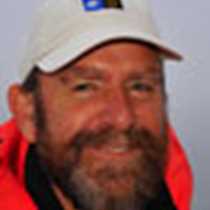Our various transoceanic migrants converged on Longyearbyen yesterday, jetting in from Australia, America, and Norway (those who explored the Norwegian fjords with Grace last week). National Geographic Explorer was at the coal jetty, a reminder of the industrial origins of Longyearbyen; American John Longyear set up the first mine in 1907. Here, the only town in Svalbard, the Norwegian government administers, monitors, and protects the archipelago of Svalbard, of which 70% of the land is National Park, Nature Reserve, or conservation site.
Within a couple of hours of boarding, we set off west to the open ocean, then hard a-starboard, northbound. After mandatory lifeboat drill, an introduction to the ship by the hotel manager, and a whole menagerie of naturalists under the leadership of Stephanie, our expedition leader, we dined in style and finally made the day’s preferred destination, bed.
This morning we came on deck to find ourselves already in spectacular glacial scenery, within the complex channels of Krossfjorden. At the northwest tip is the huge glacier face of Lilliehookbreen, 14 miles long from end to end and alive with birds; feeding kittiwakes, strings of guillemots, plunging arctic terns picking off krill, small flocks of little auks whirring low over the sea, and individual puffins paddling across the still waters. While cruising, we gathered in the lounge to learn the do’s and don’ts of Arctic protocol. Not only is this a highly protected landscape, but we must beware whenever ashore. The polar bear rules here: afraid of nothing, and hungrier than we can imagine, it considers anything that moves a potential meal. Our naturalists must carry rifles in case of sudden encounters, and group cohesion in such situations is critical. The last job of the morning was to decontaminate clothes and rucksacks, lest we scatter foreign seeds from home.
After lunch we anchored in FjortendeJuliefjord and split into several energetic groups to enjoy the unusual landscape. The long walkers were put ashore on a cobble beach and climbed ridge and bluff to a cairn at over 1000’, with outstanding views of the surrounding glaciers. Others took to the kayaks, and paddled close under the cliffs for splendid views of everyone’s favorite, the North Atlantic puffin. Others walked with Rich for a photographic expedition (proof attached) and the rest of us explored the lower slopes.
We could tell by the rich green colours that this was an unusually fertile site. We did not have to look far for the reason: above us were the shrill cries of kittiwakes and the low drone of guillemots crowded on sheer cliffs. For centuries these colonies have been the source of seasonal freeze-dried guano, raining down nitrogen and phosphate on the rocky slopes below. This kick-starts richer grass, more herbs and lush vegetation, which support numerous other species. There were half a dozen reindeer grazing high up on the grassy slopes, nearby a flock of barnacle geese, snow buntings snapping up seeds, and insects to feed chicks in the nest, and the first brood of pink-footed goose goslings were being escorted out into the bay by their parents. The finest show of all was on two rock bluffs we have dubbed “Stefans’ Garden” after one of our naturalists. Here dripping water, shelter from wind and freedom from grazing, have created the best rock garden in the area, where saxifrages, grasses, dandelions, chickweeds, and bright pink moss campion are all flowering now, at the peak of the Arctic summer.









